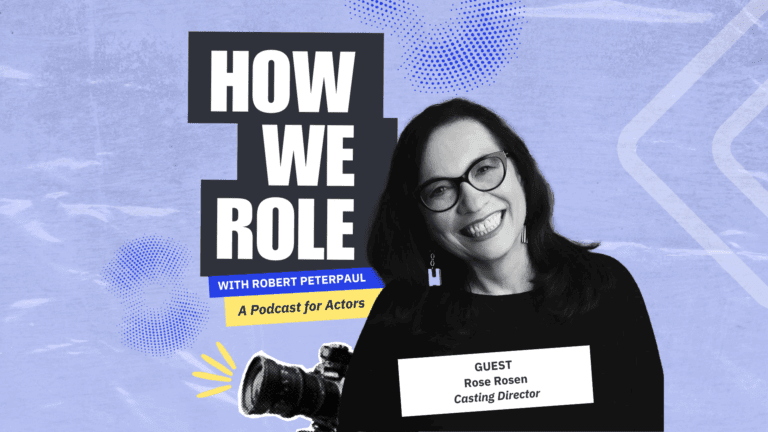Producing your work can be endlessly rewarding, but getting to the creative part also takes endless work and planning. Auditions are one of those things that seem straightforward but can easily be derailed by small failures of organization. For those making their way on a tight budget, it can be especially challenging to make sure everything runs smoothly.
If you’re used to being on the other side of the table, and this is your first time running auditions, here are some considerations that will set you up for success.
Insights: Tips for Running Auditions
- Equip the audition space with necessary tables and supplies, and hire a monitor to manage actor flow and logistics.
- Prepare audition materials in advance, schedule breaks and buffer time between auditions, and use notes to track actor details.
- Keep the audition environment professional and communicate clearly with actors about the casting timeline and decisions.
Set Up Your Audition Room for Success.
In basic terms, you’re going to want at least two tables. The first will be for the audition room. You’ll want something between you and the performers, to divide the playing space comfortably, and to give you a surface for your notes, laptop, etc. The other table is for the sign-in space outside the audition room. This will be for sign-in sheets and other paperwork, and provide a workstation for the monitor. Speaking of which…
Get a Monitor for Your Audition Room
If you’ve never run auditions before, it might be tempting to think you can do it all yourself, especially if you’re working with other team members. Remember, you’ll likely want their eyes in the room, not dashing in and out.
A monitor is the stage manager for the auditions. Monitors can help manage the flow of traffic in the lobby, collect headshots and other materials, and keep things running on time. These folks are invaluable.
Establish Communication With Your Monitor
Figure out how you and the monitor will communicate ahead of time. They’ll likely be coming in and out with each new actor to pass on materials, but you’ll want a non-verbal way to communicate as well. This way you can let them know when to let folks go, ask if certain people have arrived and so forth — all without running in and out of the room every 10 minutes. If you’re communicating with your monitor via texting, Slack or other messaging app, make sure you’re both checking it consistently, and that reception in the audition space is good.
Have Your Paperwork Handy
Make sure you have all your forms and sides ready ahead of time. Here’s a little more detail about the different types of paperwork you’ll need.
Sides
This means a few carefully chosen scenes. Cut these and mark them ahead of time. Everyone is surprised by how little text you need to get a feel for actors in the room. Sides that are too lengthy or numerous will eat up time in the room and cause actors to spread their preparation thin.
When you’re cutting them, make sure you’re choosing sides that reflect what you’ll need to see in the roles you’re casting. You want to get a sense of the range and the heart of the character, to put actors through their paces without throwing them scenes that are nearly impossible to do well out of context.
Cut out extraneous characters and exposition. Sides can be sent to actors ahead of time electronically (best if you want folks coming in prepared) or set out on the monitor’s table for cold reads (if going this route, make sure you print enough).
Signage
Think about your audition space and what it looks like to folks walking in for the first time. It’s great to have signs with “SO AND SO AUDITIONS” for the outside door and signs with arrows if there are halls involved. Make it dummy-proof, especially if you’re short-staffed.
Sign-In Sheets
You’ll want some sort of spreadsheet at the sign-in table. This will be a list of all expected actors, their time slots and/or space for them to sign in and note the time of arrival. This is to keep track of who shows up and who’s late. It also helps the monitor organize on the fly.
Audition Forms
This is where you can get a little more info on your potential actors. Some traditional things that show up on audition forms are:
- Name
- Contact info
- Pronouns
- Conflicts for rehearsal/performance times.
- Willingness to accept other roles than those they auditioned for.
- Any special considerations needed for the project that may not be included in resumes (e.g., “Do you play any musical instruments?”).
Don’t forget to set out pens for the actors to use to fill these out. If you want to be generous, highlighters for cold reads or callbacks are a welcome touch.
Remember to Schedule Breaks
Surprisingly, folks often forget this. If you’re scheduling a long day of auditions, don’t forget to allow time for yourself to eat and have periodic bathroom breaks. It’s also important to be able to stand, stretch, and clear your head every now and then.
Include Time to Talk Between Audition Slots
If possible, you’ll want to schedule a little more time in each slot than you’ll need for the audition. This will allow you time for redirects, and also time to take notes and confer with team members between folks.
I would also recommend jotting down reminder notes–something that will instantly call that performer back to mind later. A simple writeup such as “bright pink shoes” or “told story about a dog” works wonders. You’ll be shocked at how quickly everyone blurs together when you’re watching back-to-back auditions, especially if you have a full day.
Create a Great First Impression On Your Actors and Team
Remember, live auditions are often an actor’s first impressions of you and your company.
A little professionalism goes a long way. Make sure the space is clean (if you have control of that), materials are well organized, and you run as close to on time as possible.
If you’re running over, communication and understanding go a long way. Moments of particular impact — if you’re casting a low-budget project — are the touches that show you value artists’ time, like access to water or snacks in the waiting room. This will go a long way if you’re looking to make sure folks want to work with you.
Manage Expectations
If you know how long the casting process is going to take, it’s fine to say something like “We’re hoping to get back to everyone by the end of the week,” or “We’re waiting on some self tapes, so it may take a bit longer to hear back.” This is not only kind to the actors, it will create goodwill for future projects. However, if you say you will get back to everyone, make sure you follow through. I believe that an email to those who were not cast, thanking them for auditioning and letting them know that casting is complete, is both courteous and professional.
Auditions will rarely go exactly as expected. The best-laid plans get disrupted by unforeseen circumstances. But if you’re well prepared and maintain an attitude of flexibility and resiliency, even challenging processes can be exciting and achieve the desired results.
Ready to find your next role with Casting Networks? Sign up for a free trial today!
You may also like:













